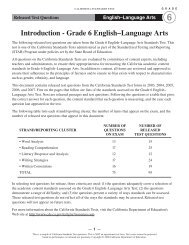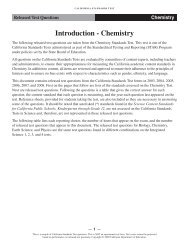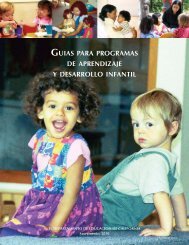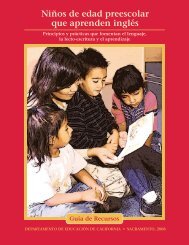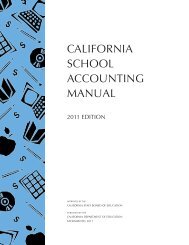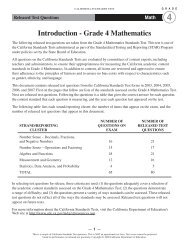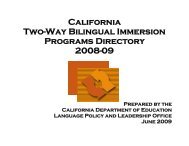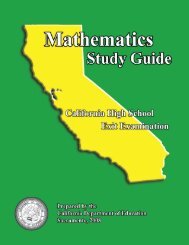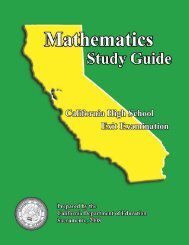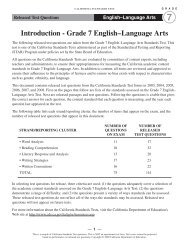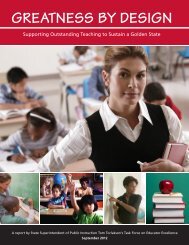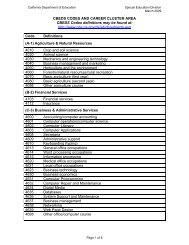Grade 2 - California Department of Education
Grade 2 - California Department of Education
Grade 2 - California Department of Education
Create successful ePaper yourself
Turn your PDF publications into a flip-book with our unique Google optimized e-Paper software.
State Board <strong>of</strong> <strong>Education</strong>-Adopted <strong>Grade</strong> Two Page 39 <strong>of</strong> 45<br />
620<br />
621<br />
622<br />
623<br />
624<br />
625<br />
626<br />
627<br />
628<br />
629<br />
630<br />
An interactive whiteboard or manipulatives such as square tiles, cubes, or other<br />
square-shaped objects can be used to help students partition rectangles (MP.5).<br />
In first grade students partitioned shapes into halves, fourth and quarters.<br />
Second grade students partition circles and rectangles into 2, 3 or 4 equal shares<br />
(regions). Students explore this concept with paper strips and pictorial<br />
representations and work with the vocabulary terms halves, thirds, halves, and<br />
fourths. (2.G.3) Students recognize that when they cut a circle into three equal<br />
pieces, each piece will equal one third <strong>of</strong> its original whole and students describe<br />
the whole as three thirds. If a circle is cut into four equal pieces, each piece will<br />
equal one fourth <strong>of</strong> its original whole and the whole is described as four fourths.<br />
631<br />
632<br />
633<br />
634<br />
635<br />
Students should see circles and rectangles partitioned in multiple ways so they<br />
learn to recognize that equal shares can be different shapes within the same<br />
whole.<br />
Circle cut<br />
into halves<br />
Circle cut<br />
into thirds<br />
Circle NOT cut<br />
into thirds<br />
Circle cut<br />
into fourths<br />
636<br />
637<br />
638<br />
639<br />
640<br />
As students partition circles and squares and explain their thinking they develop<br />
mathematical practices such as making sense <strong>of</strong> quantities (MP.2), justifying<br />
conclusions (MP.3), attending to precision (MP.6), and evaluating the<br />
The Mathematics Framework was adopted by the <strong>California</strong> State Board <strong>of</strong> <strong>Education</strong> on<br />
November 6, 2013. The Mathematics Framework has not been edited for publication.



